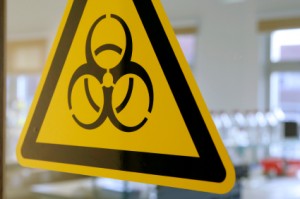LISTEN ONLINE: MEDIA BRIEFING: Tuesday, 10 March 10.30am
 As an isolated, island nation, New Zealand has managed to keep at bay many of the pests and diseases found in other countries. A serious biosecurity incursion has the potential to cost billions of dollars in lost agricultural revenue, or to cause irreparable environmental damage.
As an isolated, island nation, New Zealand has managed to keep at bay many of the pests and diseases found in other countries. A serious biosecurity incursion has the potential to cost billions of dollars in lost agricultural revenue, or to cause irreparable environmental damage.
Cutting-edge research is an essential part of the struggle to stay one step ahead of invasive plants, animals and diseases. In this online briefing, the Science Media Centre brings together experts to share the latest information on biosecurity threats facing New Zealand, and how to protect our borders.
Click on the links below to listen to the briefing help this morning and featuring Dr Craig Phillips of AgResearch and Professor Craig Cary of Waikato University.
Biosecurity briefing Part I
[audio:https://www.sciencemediacentre.co.nz/wp-content/upload/2009/03/biosecurity-part-i.mp3]Biosecurity briefing part II
[audio:https://www.sciencemediacentre.co.nz/wp-content/upload/2009/03/biosecurity-part-ii1.mp3]Registered journalists can log in to the SMC Resource Library to download the audio files.
Our briefing addresses the following questions:
* What new major agricultural pests are threatening to breach our border security?
* How well are efforts to contain the spread of didymo succeeding?
* What will emerging technologies, like genetic sampling, contribute to biosecurity?
* What are the latest developments in biosecurity science, globally and in New Zealand?
SPEAKERS:
Dr Craig Phillips, Leader of AgResearch’s Biosecurity Group at Lincoln – Science Leader for the “Better Border Biosecurity” research joint venture involving collaboration between AgR, P&FR, FR, Lincoln University, MAF Biosecurity NZ, DoC, FBRC and ERMA. Dr Phillips researches the development of environmentally safe and effective tools for national border biosecurity and pest management. He has extensive experience of biological control agents and efforts to contain the clover root weevil.
Professor Craig Cary, Dept of Biological Sciences, Waikato University – Centre for Biodiversity and Ecology Research. Dr Cary’s research background focuses on microbial communities and interfacing new bioinformatic capabilities with genomic technologies. His team successfully developed a genetic tool to identify didymo, and he now heads the lab responsible for ongoing monitoring of all North Island waterway samples.
Notes to Editors
The Science Media Centre (SMC) is an independent source of expert comment and information for journalists covering science and technology in New Zealand. Our aim is to promote accurate, bias-free reporting on science and technology by helping the media work more closely with the scientific community. The SMC is an independent centre established by the Royal Society of New Zealand with funding from the Ministry of Research, Science and Technology. The views expressed in this Science Alert are those of the individuals and organisations indicated and do not reflect the views of the SMC or its employees. For further information about the centre, or to offer feedback, please email us at smc@sciencemediacentre.co.nz.
For further information, please contact the Science Media Centre on 04 499 5476 or email smc@sciencemediacentre.co.nz